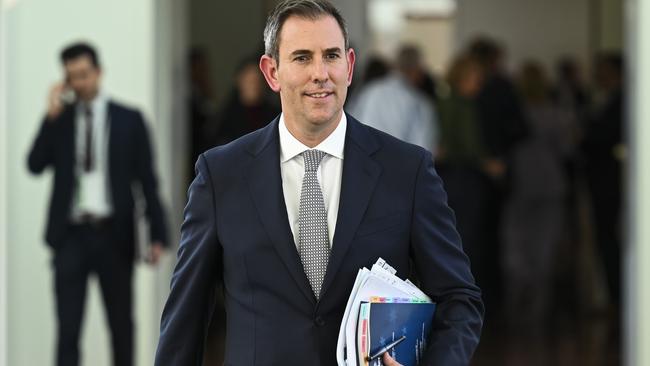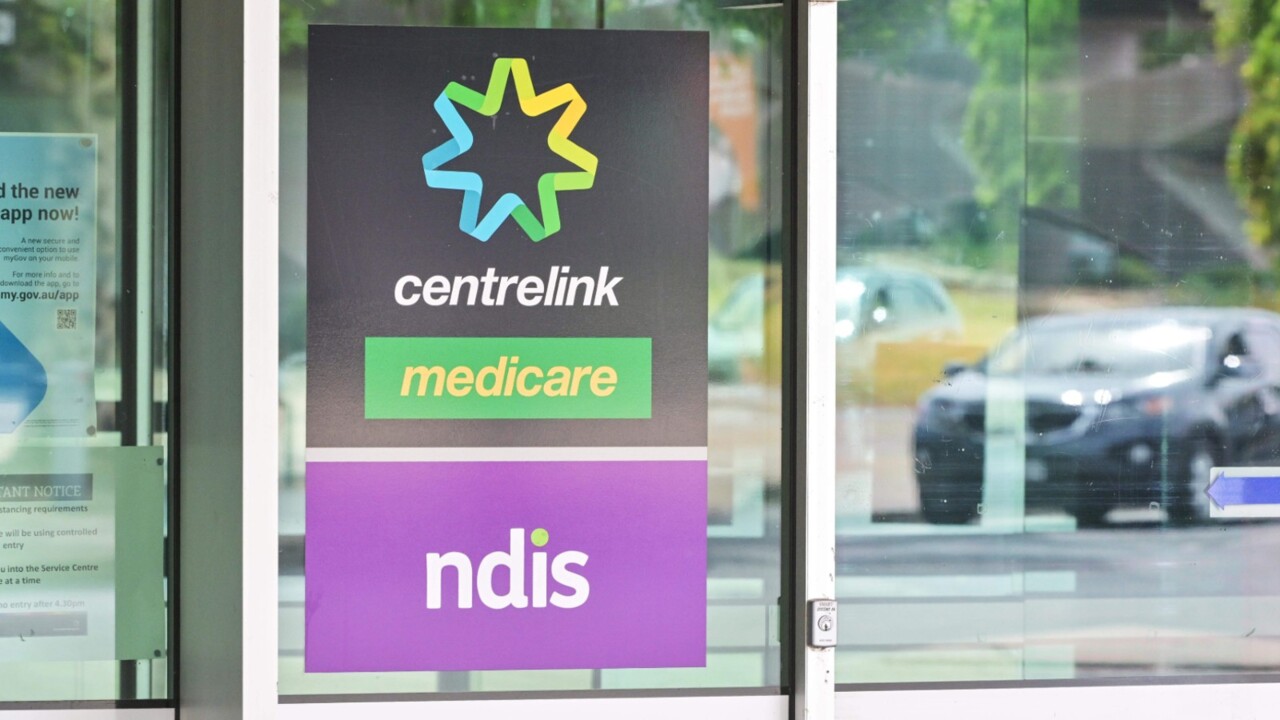Australians in the dark over secret NDIS modelling and budget savings
Jim Chalmers’ department has blocked the release of economic modelling underpinning NDIS savings and the budget, claiming it must be kept secret to avoid damaging federal-state relations.

Jim Chalmers’ Treasury Department has blocked the release of economic modelling underpinning the government’s pledge to deliver billions of dollars in already budgeted cuts to National Disability Insurance Scheme funding, claiming it must be kept secret to avoid damaging federal-state relations.
Treasury invoked national and federal cabinet privacy provisions in refusing to allow public scrutiny of the modelling and ministerial briefs explaining how the ambitious targets – estimated to save $59bn over seven years from 2027 – will be achieved under the NDIS Financial Sustainability Framework.
Unveiled by Anthony Albanese in April last year, the federal framework is supposed to nearly halve the current annual growth in costs of the disability support scheme to 8 per cent. The government, which has projected $15.3bn in reduced NDIS costs over four years from 2023-24, used the framework to forecast lower deficits.
Recent reviews have recommended a shift to NDIS support being offered to only those with high levels of need and a crackdown on fraud and bureaucratic waste.
But no details have been made public over how Treasury calculated the 8 per cent cap on NDIS funding growth, which has blown out every year since the scheme was introduced across Australia in 2016.
The Albanese government’s veil of secrecy over its budgeted plan was first revealed in August, when The Australian lodged a Freedom of Information application with the Department of Social Services – which oversees the scheme – for any modelling used to inform the framework and growth target.
The department identified a “half-page” document but refused to release the material because “the public interest factors against disclosure (were) more persuasive than the public interest factors favouring disclosure”.
A subsequent FOI request to Treasury made on September 25 reveals three relevant NDIS modelling documents had been identified, including a national cabinet paper, ministerial brief for Dr Chalmers and an attachment with “projections” to inform the Treasurer ahead of national and federal cabinet deliberations.
But Treasury assistant secretary Nerida Hunter, who heads the health, aged care and disability branch, rejected the FOI request arguing it would impact commonwealth-state relations and expose cabinet deliberations.
“Document 1 is a national cabinet document on the NDIS. The document was created with the expectation it will not be shared outside national cabinet. Confidentiality of the document has been maintained,” Dr Hunter wrote.
“Release of the document would undermine this mutual understanding of confidence and diminish the trust of the state and territory governments in the commonwealth’s ability to handle confidential information.
“I find that disclosure would result in states and territories being less willing to speak openly with the commonwealth in the future, undermining the relationship and open dialogue at meetings of the national cabinet.”
The federal, state and territory governments, with the exception of Tasmania, are Labor.
On blocking access to briefing documents prepared for Dr Chalmers ahead of national and federal cabinet meetings, Dr Hunter said: “I consider this material is deliberative in nature and any factual material therein is inextricably intertwined with the deliberative material.”
Explaining her reasons for blocking the three NDIS documents, Dr Hunter acknowledged that “in favour of release, I find disclosure would promote the objects of the (FOI) Act by increasing scrutiny of government activities”.
“Against disclosure of the material … I have considered the strong public interest in preserving good relations between the governments of the states, the territories and the commonwealth in relation to confidential matters.”
“A document is conditionally exempt under section 47B(a) of the FOI Act if disclosure ‘would, or could reasonably be expected to, cause damage to relations between the commonwealth and a state’.”

National cabinet leaders last month backed the federal government’s 8 per cent growth NDIS cap by 2026 in return for multibillion-dollar health, disability and GST funding deals.
At the December 6 meeting, Mr Albanese gifted more than $10.5bn in GST top-ups and tens of billions of dollars for extra healthcare in exchange for doubling the annual increase in state and territory funding for the NDIS from 2028.
The national cabinet meeting immediately followed the release of the NDIS review, led by Bruce Bonyhady and Lisa Paul, which looked into financial sustainability and participant experience.
The review, which handed down 26 recommendations and 139 supporting actions, focused on restoring trust in the NDIS, ensuring the scheme’s sustainability and enhancing support for participants.
Dr Chalmers failed to answer a series of questions about the FOI application and modelling – including whether he was briefed about the FOI decision.
“This is standard treatment for deliberative documents, feeding into budget decisions like these,’’ a spokeswoman for the Treasurer said.
“There are many public documents which detail our efforts to ensure participants are getting maximum value for money in the NDIS and that it can continue to provide for people in a sustainable way into the future.”
Former South Australian senator Rex Patrick, currently challenging six FOI decisions in the Administrative Appeals Tribunal relating to the stage three tax cuts, AUKUS nuclear safety and workforce numbers, said “secrecy is a lot more expensive than transparency”.
It took the Australian Financial Review and Mr Patrick more than a year to gain access to Mr Albanese’s diary, which the government finally released days after Christmas to avoid messy AAT hearings.
“In my experience, having done a similar amount of FOIs to the Albanese and Morrison governments across a wide range of portfolio areas, there is little difference between the two,” Mr Patrick said.
“The one thing that makes the current government worse is that Morrison was quite arrogant in his secrecy, whereas Albanese purports to be transparent but is not. He is the secrecy wolf in transparency sheep clothing.”
Opposition NDIS spokesman Michael Sukkar said Labor “continues to undermine the trust of more than half a million Australians with an NDIS plan and keep them and their families in the dark”.
“This government claims to be transparent with Australians; however, the Albanese government continues to do everything to avoid scrutiny,” he said.
Under questioning from NSW Liberal senator Andrew Bragg during a Senate estimates hearing on October 25, Dr Hunter said that ahead of the last budget the scheme’s actuary had projected NDIS expenses “would increase by $17.2bn over four years from 2023-24”.
The Treasury official told the hearing that $732.9m in funding allocated to the National Disability Insurance Agency was “expected to reduce additional growth in scheme expenses by $15.3bn, which would then limit the additional growth that we saw at budget in scheme expenses to $1.9bn over four years”.






To join the conversation, please log in. Don't have an account? Register
Join the conversation, you are commenting as Logout